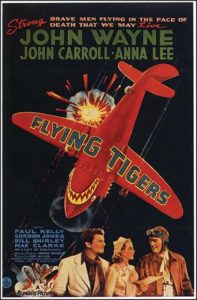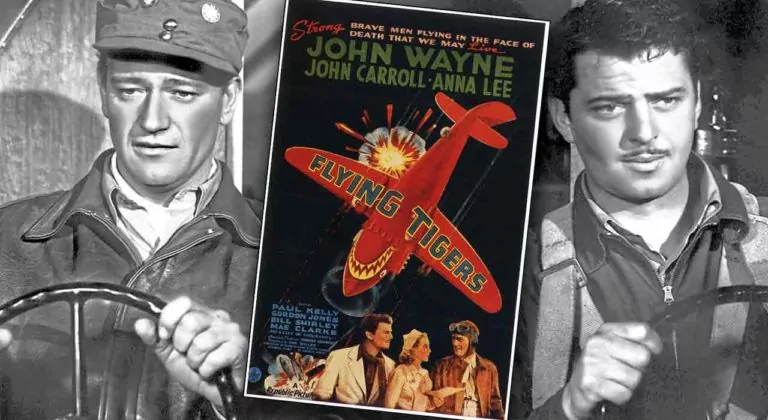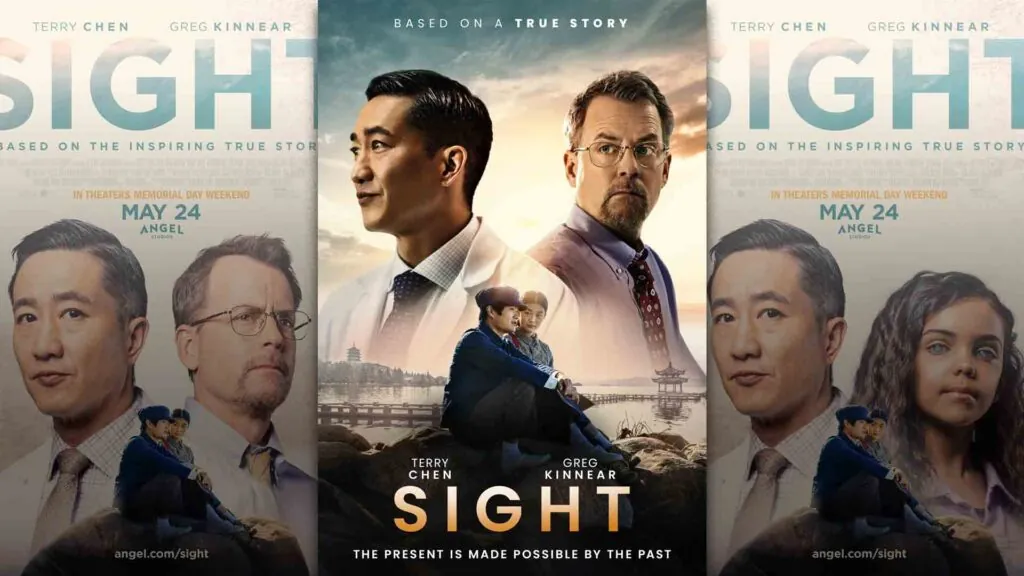Drama / War / Black and White
104 minutes / 1942
RATING: 7/10
On January 3, 1942, just one month after Japan’s sneak attack on Pearl Harbor, a group of three American fliers staged a daring attack on a Japanese base in Thailand. The three were not members of the US military, but were, instead, part of the American Volunteer Group (AVG) – they were civilians hired by the US government. The AVG was going to be an unofficial group that could help the Chinese fight the Japanese, even as the US remained officially neutral. But delays in the group’s initial organization meant they only saw action after war had been declared.
Flying Tigers is about the 1st AVG, the group that led America’s first daring response to the Japanese attack. But as movies do, there are some liberties taken with the facts. In the film version Capt. Jim Gordon (John Wayne) and the 1st AVG have been conducting attacks on the Japanese long before his country’s official entry into the war. What isn’t a liberty is how successful the Flying Tigers are shown to be. On film and in real life the 1st AVG was constantly and often massively outnumbered, and yet never lost an air battle (they are credited with at least 296 kills, while only 14 of their own pilots were killed). Still, as the fighting continues, the casualties do come, and Capt. Gordon has to take whatever pilots he can find, even if some of them are troublemakers.
And the biggest troublemaker of them all is Capt. Gordon’s independent and down-right self-absorbed buddy Woody Jason.
This film has a message and it’s the same one that Woody Jason has to learn: to win this war that independent streak that’s so much a part of the American make-up will need to be restrained. Yes, individual ambition helped make America prosperous, but ambition unrestrained is simply selfishness. What Woody learns can be summed up in biblical terms: we need to govern our ambition with the Second Greatest Commandment. Selfish ambition makes Woody despised; ambition and a love for his neighbor makes him remarkable.
Cautions
There is very little blood shown – a Japanese pilot will get hit, throw his hands up to his face, and then, for a moment, we will see blood seeping between his fingers before the scene cuts away. That happens a half dozen or so times.
The only other warning would concern the portrayal of the Chinese and Japanese. They only make brief appearances, but when they do they come off as a little bit silly or simple. That can be credited in part to the language barrier – anyone speaking a language they only partially know is going to sound a little simple. But there’s also likely an element of racism here, which parents might want to point out to their kids.
Conclusion
A modern audience might find the pacing in the first 30 minutes slow, up until Woody Jason shows up. So some patience is required, but this is a fascinating look at the earliest of America’s action against Japan. It would be a good one for John Wayne fans, and for a family with kids who are 10 and up who have an interest in World War II…and who haven’t had their attention span ruined by constant video and TV watching.











